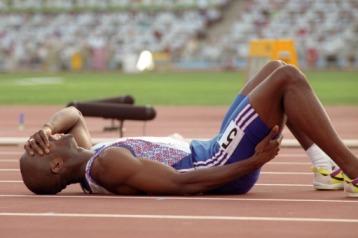
It’s that time of the year where summer training programs are winding down and Strength and Conditioning Coaches throughout the country are looking back at their summer training session and hopefully critiquing areas that worked well and other exercises, drills, etc, that didn’t work so well. When recently working on a recap of my summer training programs I thought of a catchy little 3 word phrase that represents what I try and do at the end of any long training block. These 3 words are ACCEPT, ADAPT, APPLY. I originally became a fan of these simple 3 word phrases after hearing Carolina Panthers Strength and Conditioning Coach Joe Kenn use the phrase Absorb, Modify, and Apply, when discussing what to do with material you gather at clinics, site visits, etc. Absorb the material presented to you, modify your program in accordance with what you think fits into your philosophy, and lastly apply this new information in your program and with your athletes. My program evaluation model of accept, adapt, apply, has a similar thought process behind it, with a few changes that I think should help coaches continue to evolve and improve their programs.
Step 1: ACCEPT
The first step in creating a better program is accepting the fact that your program had flaws. This can be a very difficult thing for many strength coaches to admit because no coach likes to openly acknowledge that their program had flaws. The first thing I do when reviewing a training program is to go through everything we did in the previous training period and thoroughly evaluate the benefits and obstacles we had throughout the training block. This includes looking at our periodization model, our exercise selection, our set/rep/intensity schemes, and our speed, agility, and conditioning protocols. Throughout the training time period I continuously make notes on things I think are working well and things I think we could change in future programs. This helps make the “Accept” step very easy because I have kept track of my thoughts over, in this particular case, the entire summer. In my opinion, if you cannot accept the fact that your program has flaws and think your program has reached its final evolution stages you have made a big mistake. I closely follow some of the best performance coaches in the country and one common theme I see within this elite group is they are always learning new material and evolving their programs and philosophies.
Step 2: ADAPT
The second step in creating a better program is to adapt your program based on your evaluation and add, remove, or alter pieces of the training program you thought were non-beneficial or could have had more of a benefit if implemented differently. Adapting your program does not mean you go back to the drawing board and start from scratch. It means you accept the fact that certain things did not work as well as planned and now you adapt your program to improve these sub-par areas with the goal of creating a better training program in the future. Adapting your program may mean you only make a few small changes, but every program I have ever written and implemented could have worked a little bit better if I did a few things different. I have yet to design the program where everything went off 100% with no issues anywhere. The perfect program does not exist, especially when working with athletes who have a wide array of body types, gene pools, and training history. In order to advance in not only this profession, but also in life, one must continue to evolve and adapt.
Step 3: APPLY
The last step of this model is probably the easiest of the 3. Simply apply the changes to your next program. It may be the next summer training program or it may be the training program starting next week. Each new training period not only gives you the opportunity to make changes to your training philosophy and program based on your own critiquing, it also allows you the opportunity to apply new drills, exercises, schemes, etc, you picked up over the last few months while attending a few clinics or reading a couple new books. By making these changes you allow your program to continuously evolve and you may even pick up a few new training tools that help make your program better than it already is!
Final Random Thoughts
Every 4 week training block I design I look at as an experiment (with many variables) and have a hypothesis of what I think will happen, but many times the things I think will happen either don’t happen, or something else happens that was totally unexpected. For example, my goal with my baseball guys who stayed for a 12 week training block last summer was to just get stronger in every area and put on 5-10lbs of lean mass. That was expected and hypothesized early on. What I did not expect to happen was to have over 90% of our team run a personal best in their 60 meter sprint time. We did not spend much time training that specific event (60m), but a side effect of getting stronger was also getting faster. I obviously have a pretty good idea why this happened (increased ability to create force = increased speed), but didn’t expect it to happen at such a high incidence since it wasn’t an emphasized training area. I can now conclude that an inexperienced athlete can likely improve their speed by simply getting stronger. This is by no means rocket science, but I have personally proved this and have 28 out of 31 athletes that can verify this as well.
As always, feel free to leave a comment or hit me up on twitter @zbrulet.
-ZB







